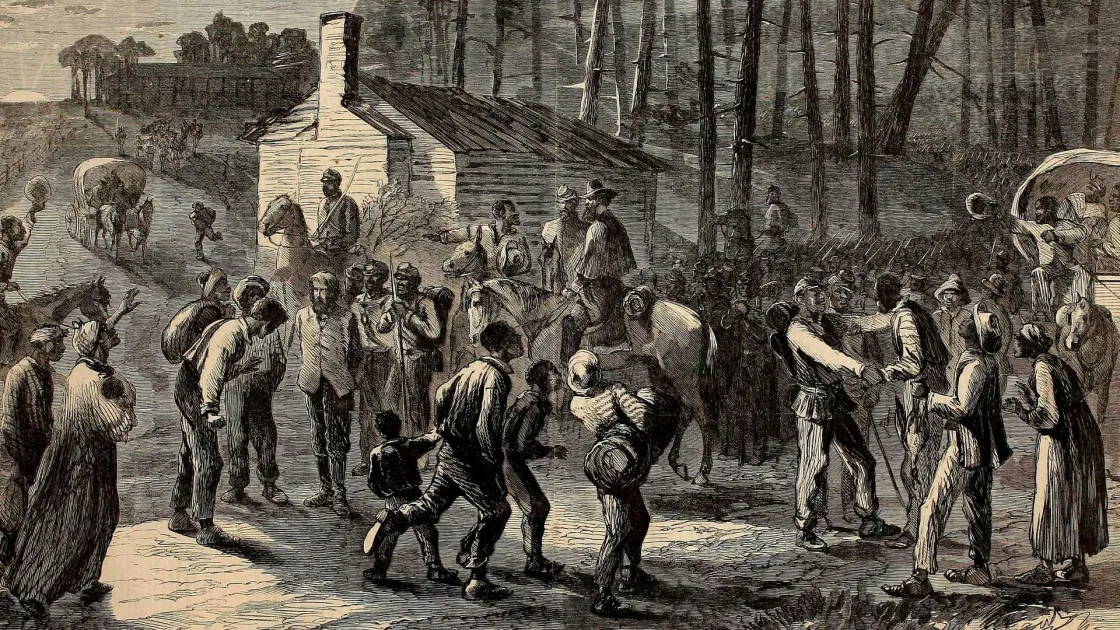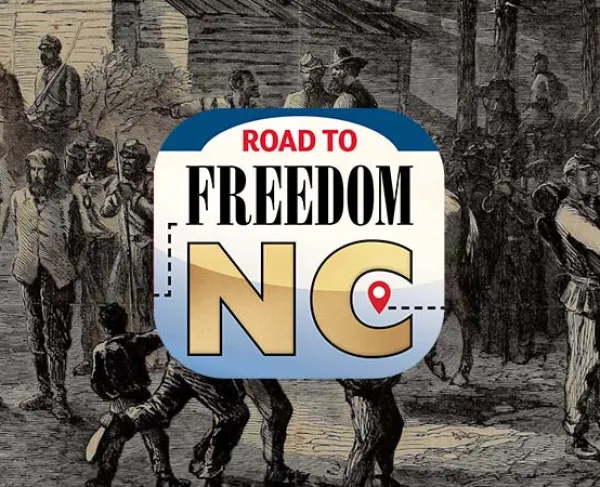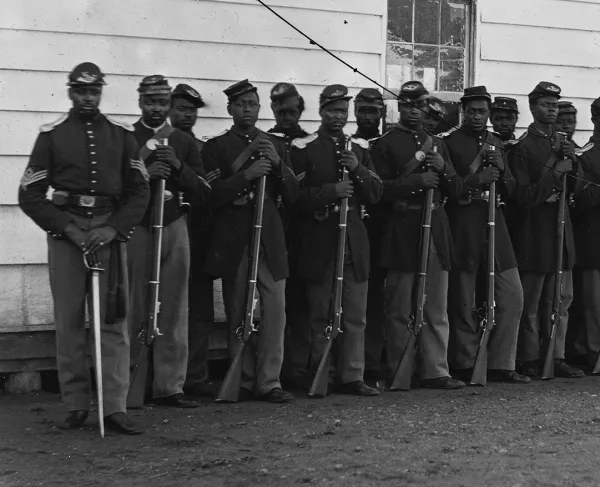A Town Divided
North Carolina
Waterfront Park
202 S Water Street
Elizabeth City, NC 27909
United States
This heritage site is a part of the American Battlefield Trust's Road to Freedom: North Tour Guide app, which showcases sites integral to the Black experience during the Civil War era. Download the FREE app now.

Between 1862 and 1863, African Americans sought and defended their freedom as opposing forces and neighbors fought to control Elizabeth City.
The port of Elizabeth City on the Pasquotank River provided a “backdoor” supply route through the Dismal Swamp Canal for the Confederate base at Norfolk. The Union Navy shut that door on February 10, 1862, when a flotilla of 14 Union gunboats fired on, rammed and boarded a so-called “Mosquito Fleet” of six Confederate vessels. Only the CSS Beaufort escaped up the canal, but the Confederates abandoned Norfolk a few months later and never regained control of the Albermarle Sound and its inland rivers. African American sailors served on several of the Union ships and one of the few casualties was James A. Young, a 42-year-old officers' cook (“colored”) on the USS Valley City who suffered a leg contusion and severe burns on his face and neck.
The swampy land surrounding Elizabeth City, especially north into Virginia along the canal, remained a haven for Confederate guerillas. In April 1863, a garrison of local white and Black Union men abandoned the city. In August 1863, soldiers from the 1st United States Colored Troop (USCT) regiment briefly encamped along the Elizabeth City waterfront near today’s North Poindexter and Burgess Streets. They built fortifications, recruited soldiers and laborers from those fleeing slavery in the surrounding area, and raided guerillas in Chowan County.

December 1863 saw the return of nearly 2,000 Black soldiers to the Elizabeth City area, including elements of the 1st USCT, along with men from the 1st and 2nd North Carolina Volunteers (African descent), the 5th USCT and the 55th Massachusetts, all under the leadership of abolitionist Brig. Gen. Edward Wild. Marching south from their base near Norfolk, “Wild’s African Brigade” aimed to break up the guerilla activity, free slaves in accordance with the Emancipation Proclamation, and recruit more African American soldiers. They skirmished with guerillas destroying enemy property, capturing four hostages to negotiate the safe treatment of their captured comrades, and executing one guerilla as a warning. They freed approximately 2,500 enslaved persons, but most of those fit to be soldiers had already fled to Union lines or been moved south by their owners. This largest operation undertaken by Black soldiers in North Carolina up to that time demonstrated their military effectiveness and alarmed the pro-Confederate faction of the divided public.
In the wake of “Wild’s Raid,” war-weary citizens of Elizabeth City and four neighboring counties unsuccessfully petitioned both Union and Confederate leaders to withdraw forces from the area.
Know Before You Go
There are historical markers here in Waterfront Park and elsewhere in the city that mark some specific places where this history happened, and you can learn more at the Museum of the Albermarle just across the street.




